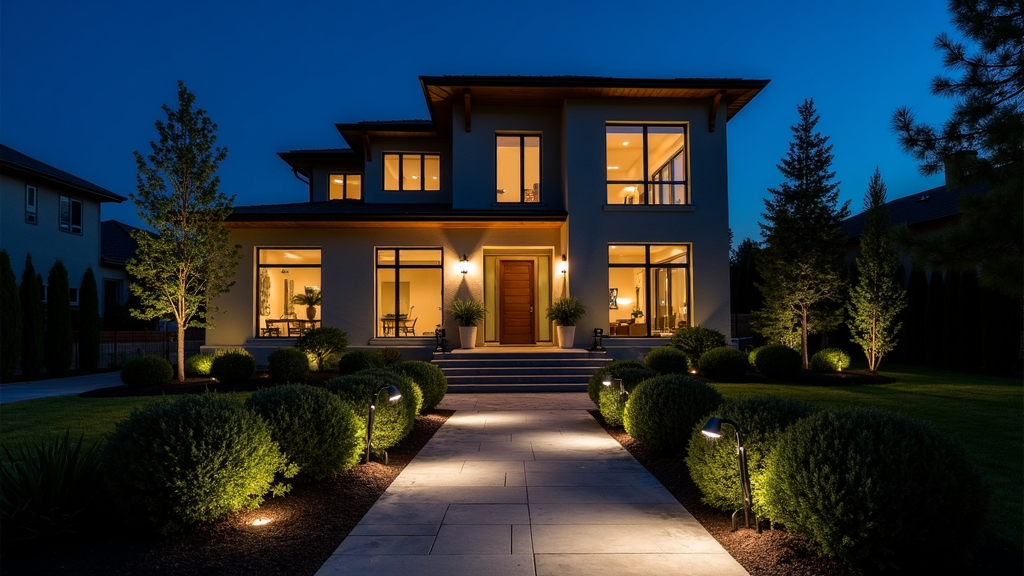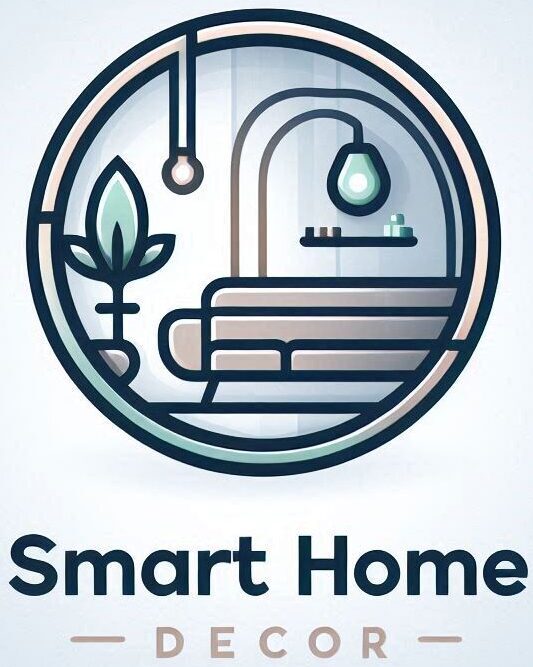Smart outdoor lighting can totally transform your property by adding both security and style. It’s not just about stringing up some bulbs. Today’s smart lights are packed with technology that makes them easier to control, way more efficient, and actually fun to customize. If you want a yard or garden that looks inviting at night but also keeps intruders on their toes, this is the right time to jump into the world of smart outdoor lighting.

Why Smart Outdoor Lighting Makes a Big Difference
Traditional outdoor lights are all about basic visibility. Flip a switch and the lights come on, that’s it. Smart outdoor lighting steps things up a notch by helping you schedule, automate, and even adapt your outdoor lights to different situations. This means you use less energy, save money on your bill, and keep your home looking sharp, all while giving a boost to security.
Having lived with boring motion lights that blind you whenever a raccoon strolls by, I switched to smart equipment and noticed an immediate upgrade. Now I control my lights from my phone, set them to match my evening routine, and even change colors for parties or holidays. It’s pretty handy to get both the safety and the curb appeal all in one setup. The peace of mind, convenience, and cool-tech factor make it an easy recommendation for anyone thinking of switching things up outside.
How to Make Your Outdoor Lights Smart
Turning any outdoor light into a smart system doesn’t require rewiring your whole house. Here’s my approach to adding some brains to the backyard or front porch scenario:
- Smart Outdoor Light Bulbs: These bulbs connect to WiFi or Bluetooth and screw right into your existing fixtures. You can control them using apps, voice assistants, or automation schedules.
- Smart Plugs: Great for string lights, holiday displays, or plugin lanterns. You just insert these into a regular outdoor outlet, and now your regular light is smart.
- Smart Light Fixtures: If you’re after a bigger makeover, swap out your older wall or path lights for built-in smart fixtures. Most are weatherproof and come with app support or voice control.
- Motion Sensors and Cameras: Adding a compatible motion sensor to your setup lets lights come on when movement is detected, scaring off unwanted visitors and lighting paths only when necessary.
- Smart Hubs: For a big property with lots of lights, a smart hub can streamline control. Systems like Philips Hue, Ring, or Google Home work with loads of outdoor gear.
In my place, I use a combination—smart bulbs for porch and entry lights, a smart plug for string lights around the patio, and a camera light combo in my driveway. The main thing is making sure whatever you buy is officially rated for outdoor use so it handles rain, snow, and sun without any problems. Making that right choice up front saves you hassle and keeps your home safe, lit, and looking good year-round.
Best Color Light for Outdoor Security
Light color really matters for both looking good and staying safe. For security lighting, I usually recommend going with bright, cool white light in the 4000K to 6500K color temperature range. This color tone mimics daylight, which helps with better camera clarity, makes it easier to see details, and is less inviting to lurking intruders.
Warm white lights (2700K to 3000K) are cozier and work well for relaxation zones like patios and decks, but they don’t have the same security effect as a cool white floodlight. If you want both style and function, smart bulbs let you switch color temperatures with a tap. You can go warm and relaxing for a party and crank it up to blue-white for the rest of the night.
How to Choose Outdoor Security Lights
This is where it helps to get a little picky. When shopping for outdoor security lights, I look at a few main features:
- Brightness (measured in lumens): You want enough light to actually see and be seen. For floodlights and driveway lights, 1800–3000 lumens is common. Paths and garden markers work fine at 200—500 lumens per light.
- Motion Detection: Smart motion sensors mean the lights turn on when needed, saving energy and surprising anyone sneaking around. Range and sensitivity can usually be adjusted in the app.
- Connectivity: Make sure your lights work with your smart home system (Amazon Alexa, Google Assistant, Apple HomeKit, etc.). WiFi is easiest, but Zigbee and ZWave setups are also popular for bigger properties.
- Weather Resistance: Look for lights with an IP65 or IP66 rating to handle real rain, snow, or dust without issues.
- App Features: Being able to schedule, group, and dim the lights from your phone is really useful. Some even let you check in from anywhere or talk through a built-in speaker.
- Style: There’s a ton of variety out there now. Modern lanterns, hidden spotlights, or sleek wall fixtures can add style while being practical.
When in doubt, I always read reviews and check sample photos to see how the light looks in real backyards. That’s super useful when making a final choice. It can also help you spot which models are truly weatherproof or user-friendly, so you’re not stuck with returns or replacements later.
The Most Familiar Type of Outdoor Security Lighting
If you ask around, most people think of motion-activated floodlights for outdoor security. These are classic and instantly recognizable—the big, bright lights that flip on the second they sense movement. Modern versions often integrate with cameras, send alerts to your phone, and allow remote control. For anyone worried about break-ins, a motion-activated floodlight shining a daylight-white beam over your driveway or back gate is a tried and true option.
Pathway lights and wall-mounted fixtures are also everywhere but offer a softer touch. They help folks see where they’re going and highlight garden borders but usually aren’t as bright as floodlights. If you’re aiming for the best of both, a combination of both styles lets you make your space both beautiful and secure.
Easy Ways to Upgrade Your Outdoor Lighting
Getting a smart setup doesn’t mean ripping everything out and starting over. Here’s how I like to approach an upgrade:
- Focus on Entry Points: Install smart motion lights near front and back doors, garages, and gates. These are usually the highest-priority zones for security.
- Highlight Paths and Perimeters: Add stake lights or low profile fixtures with smart control to walkways and fences. The visual border discourages wandering guests and helps you walk safely at night.
- Layer Your Lighting: Combine different types of lights. Floods for wide coverage, spotlights for focal points, ambient lights for atmosphere. This trick covers safety without over lighting everything.
- Use Smart Scheduling: Set your system to turn on at sunset, dim at bedtime, or blink when the doorbell rings. These small automations make your home feel lived in even when you’re out.
If you already have some regular LED fixtures outside, consider starting with a couple smart plugs or bulbs before tackling full fixture replacements. You’ll see what you like and what fits your routines best. The flexibility lets you experiment and slowly set up the ideal environment without breaking the bank.
Tips on Installing and Using Smart Outdoor Lighting
- Check WiFi Coverage: Outdoor lights on the edge of your property need strong WiFi. Range extenders or mesh networks help a lot.
- Keep Safety in Mind: Make sure all connections and fixtures are rated for outdoor use and properly sealed. Avoid extension cords or makeshift wiring for permanent setups.
- Name Your Lights: Give each light a clear, logical name in your app—‘Driveway’, ‘Back Porch’, ‘Left Fence’—to avoid confusion later.
- Group by Area: Create routines or groups in your app for zones (like “Front Yard Night Mode”) to change multiple lights at once.
Once I grouped my patio and side yard for one-tap control, I stopped forgetting to turn on the right lights at dusk. It’s a simple tweak that streamlines how you use your space after sunset. If you’re the type who loves entertaining after dark, these automations make things a whole lot easier.
Practical Uses for Smart Outdoor Lighting
- Guest Welcome: Lights illuminate when you arrive or when friends pull in the driveway. There’s no fumbling with switches.
- Vacation Mode: Automate random on or off times to make it look like someone’s home, adding peace of mind when you’re away.
- Pet Patrol: Sensors turn on lights for pets who like late night outings, making it easier to keep an eye on them and making those trips outside safer for everyone.
- Garden Parties: Switch your patio or backyard from basic white to colorful scenes right from your phone. You can add some variety for holidays, special events, or even just to try out different vibes.
Frequently Asked Questions
How can I make my outdoor lights smart?
Replace basic bulbs with smart bulbs, use outdoor-rated smart plugs, or install fully integrated smart fixtures. Connect devices to your WiFi or smart home hub. Then control them via app or voice assistant—it’s super convenient for everyday use and security routines.
What color light is best for outdoor security?
Bright, cool white (between 4000K and 6500K) works best for security. This color mimics daylight, creates clear visibility, and helps security cameras pick up better detail. For ambience, warm white is nice around seating areas, but it isn’t great for stopping trespassers.
How do I choose outdoor security lights?
Focus on brightness (higher lumens for wide spaces), smart features like motion detection and app control, weather resistance, and style that matches your home. Read reviews, compare app features, and make sure whatever you buy is rated for outdoor use. Look for testimonials and forums to get a feel for reliability, especially in harsh climates.
What is the most familiar type of outdoor security lighting?
Motion-activated floodlights are the most common and recognizable type of outdoor security lighting. Nowadays, you’ll find them with smart features, camera integration, and remote control, making them an easy upgrade for most homes. If you want to step up your curb appeal and save on energy bills while keeping your space secure, this is an excellent place to start.
Wrapping up, smart outdoor lighting is more than a cool upgrade—it brings together safety, style, convenience, and energy savings. No matter your budget, there’s a mix of plugs, bulbs, and fixtures that can fit your needs and help set the scene for all those nights outside. Track down the right combination, take up a notch what you already have, and let your home shine bright and safe all year long.
